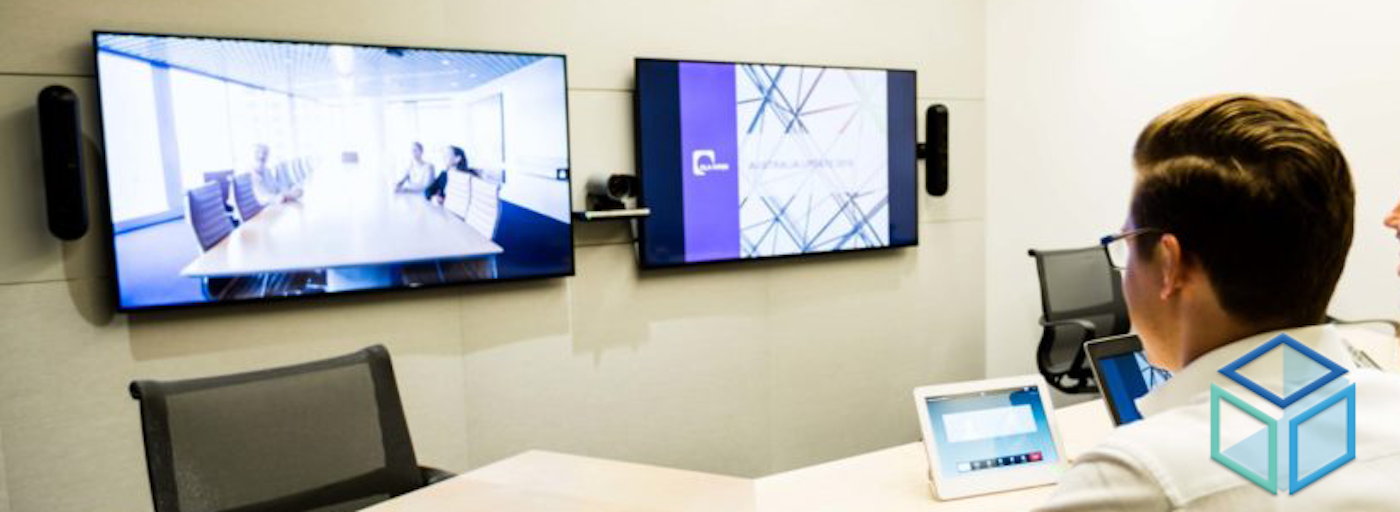When we think of the term “collaboration”, we think of ways people can communicate to achieve a goal. Collaboration is an essential part of success in any aspect of life, and the business world is no different. Individuals from the same department must share knowledge and resources to achieve desired results for their projects. Departments must effectively communicate and share resources to achieve their own goals and the goals of the organization. It is no longer a “you stay on your side of the fence and we’ll stay on ours” kind of mentality in the corporate world. Departments must work together more than ever to help the organization gain competitive advantage and continue to grow in market share.
Until recently, the method of collaboration was to reserve and stage- large elaborate conference rooms. These rooms seated 50 or more people and took up a lot of real estate. Rooms designed with a large table, a large display screen and an elaborate video conferencing system. These areas still serve a purpose in large company meetings with staff and/or clientele. What about the day-to-day impromptu meetings that take place? These meetings usually just include 2-5 individuals who are looking to meet for

Huddle spaces are breeding a new era of innovation.
15-30 minutes. The large conference room is not an effective area to host these meetings.
To improve productivity while cutting costs, organizations are moving away from large conference rooms and creating “huddle spaces”. Huddle spaces make up small, enclosed rooms that sit up to 5 people. They include less furniture, whiteboards (or SMART boards), smaller display screens and “all in one” video conferencing technology, allowing everyone in the room to feel like they are a part of the conversation.
Benefits of Huddle Spaces
More video conferencing: The video conferencing technology in large conference rooms costs increased with elaborate hardware and software licensing. Video conferencing in huddle spaces require web conferencing apps like Cisco Spark, Microsoft Skype, and Ring Central that integrate with a mobile device. Hence, this allows for more intimate collaboration at a significantly lower cost.
More flexibility: Huddle spaces create quick and inexpensive meeting rooms. This allows organizations to utilize their real estate to optimize internal and external collaboration. In addition, huddle spaces can be used for impromptu meetings with no scheduling. They can also be a part of a weekly meeting schedule utilizing technologies like Crestron Mercury with Fusion. This means less bottlenecks within the organization and increased productivity across all departments.
More innovation: Being able to meet with internal and external colleagues and/or clientele anytime provides a catalyst to get more done in a shorter amount of time. Huddle spaces create more efficient collaboration through more efficient sharing of ideas. With more huddle spaces, the barriers to communication significantly decrease. Thus, allowing more innovative brainstorming and idea generation to take place.
Centralized support: One of the most important, if often overlooked factors affective overall ROI for a technology investment is ease of support and management. There is a significant, measurable cost of going room to room supporting PC’s and other equipment. By employing powerful, yet easy-to-use resource management software, all components in a huddle space AV system can be remotely monitored and maintained. Because these rooms designs contained simple systems with only the equipment users need to have fast impromptu meetings—meaning they rarely even have a room PC—they can significantly reduce support costs over systems in larger spaces.
Conclusion
Huddle spaces have redefined the way organizations collaborate both internally and externally. I would encourage companies who have a large staff to consider the utilization of huddle spaces. It will significantly simplify the collaboration process. Your organization will get more out of promoting new ideas, and create an environment of innovation, engagement and productivity.
Share this Post

